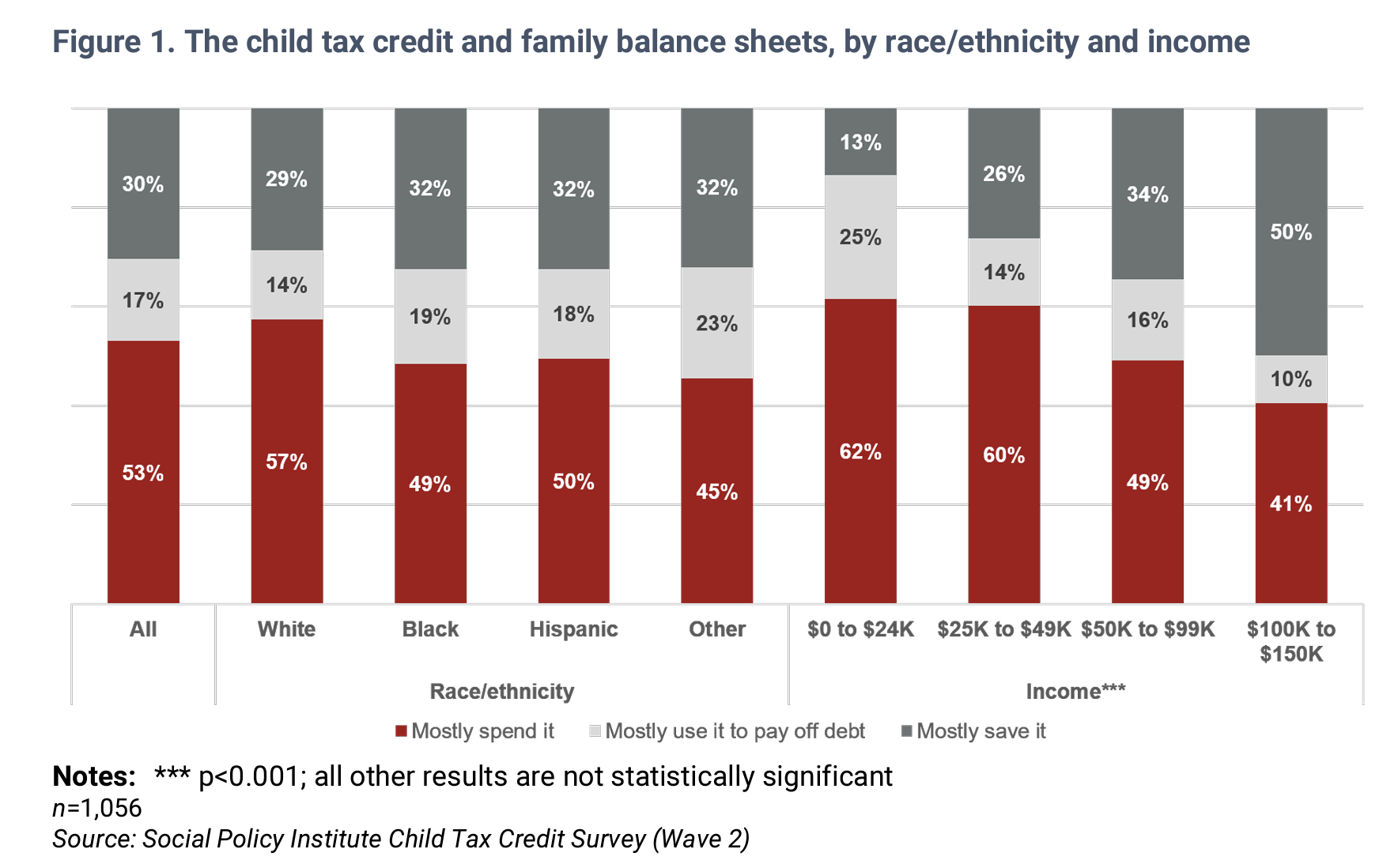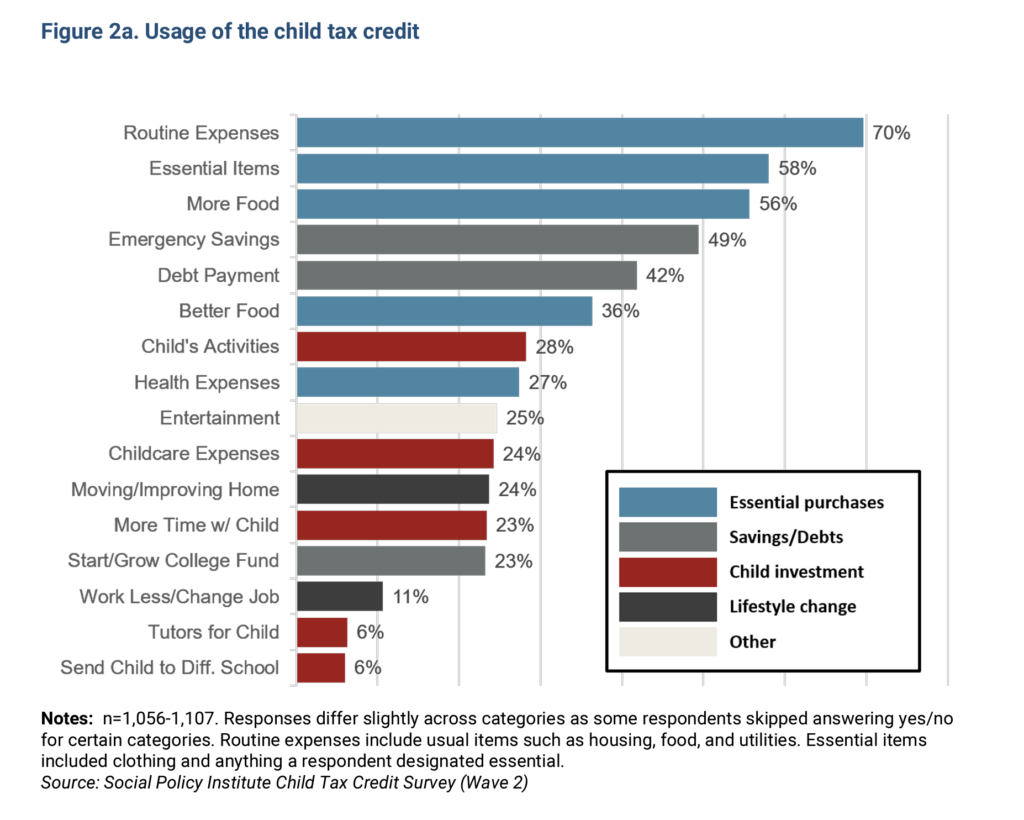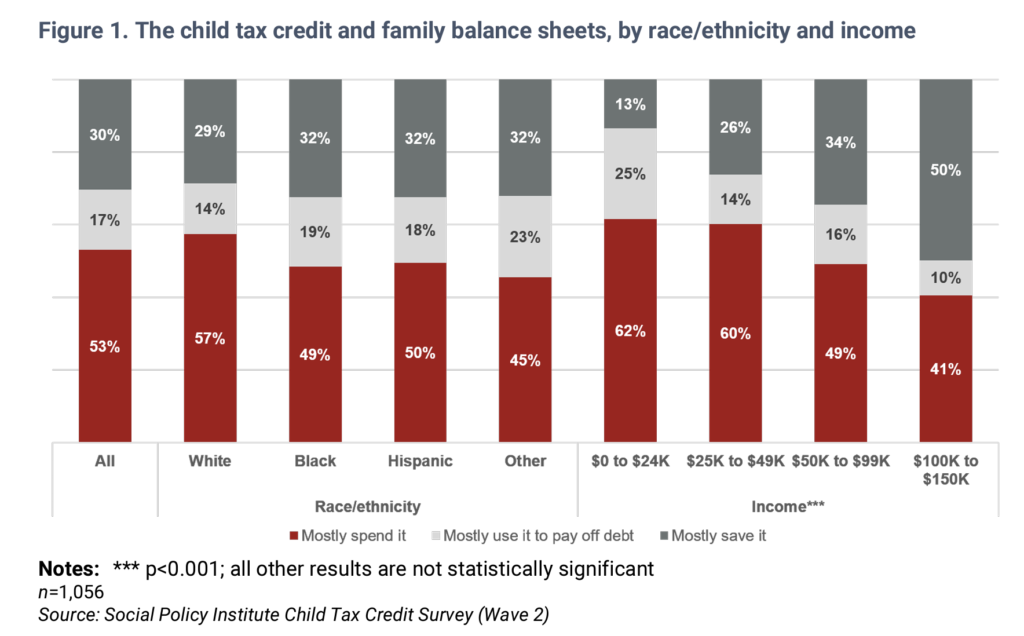How the Monthly Child Tax Credit Reduced the Level of Desperation in America
Money is protection. When we have enough of it, it can be an all-purpose shield, able to protect us from all kinds of things.

With the enhanced Monthly Child Tax Credit, fewer parents resorted to selling their blood plasma and paying 391% interest rates in order to feed and house their families
Money is protection. When we have enough of it, it can be an all-purpose shield, able to protect us from all kinds of things. Protection from the most extreme things also need not require extreme amounts of money. In fact, a surprisingly small amount of money can mean the difference between experiences born of desperation, and being protected from desperation-born experiences.
With that in mind, thanks to the publication of a new study of the full six months of 2021’s monthly child tax credit, the following is a look at how parents were using the direct payments – not so much what they were doing with the money – but the things they no longer needed to do thanks to having money and being able to depend on that money each month.

BROOKINGS GLOBAL WORKING PAPER #173 APRIL 2022
In reading the report of the thousands of Americans surveyed both before the first payment and after the last payment, and the differences between those who received the payments and those who didn’t, what stands out as perhaps the most visceral finding, is that the monthly cash payments meant the recipients were half as likely to sell their blood plasma.
Reduction of Illegal Drug Usage
CTC recipients were also almost half as likely to start using illegal drugs. This is a finding quite contrary to popular belief, but also just a further replication of the available evidence. A 2014 meta-analysis of 19 studies of the impacts of cash programs on drug use found that none of them resulted in a statistically significant increase in drug usage, while 82% of them found a decrease in usage.
Since 2014, this finding has only been repeated over and over again, and this CTC finding is just the latest repeat. Drug use is a form of self-medication. It’s all backward to think that cash will increase it. On the contrary, greater economic security thanks to monthly cash mean less stress, which for most people means less desire to self-medicate.
Predatory Loans
Another finding that really stands out as a reduction of desperation is how CTC recipients were almost twice as likely to stop taking out payday loans or pawnshop loans. These predatory types of loans can involve annual interest rates above and beyond 100%. Some states are making such absurdly high-interest rates illegal by capping them at 36% or lower, but not states like Texas where the typical APR is 664%.
In states like these, however, thanks to the monthly CTC, parents were able to entirely avoid seeking out these loans at all. They no longer so desperately needed money, that they were willing to pay five times what they needed in order to get what they needed for their families immediately.
These findings also showed even larger impacts when looking at racial and income differences. Black families thanks to the monthly CTC were almost three times more likely to stop taking out auto title loans, and families with incomes lower than $25,000 were over three times more likely to stop taking out short-term payday loans. Clearly, there was a large reduction in economic desperation, especially for those families who tend to be confronted with the greatest challenges in securing basic needs.

Security Food and Rent
When it comes to what parents need most, rent money is of course right at the top of the list for many, along with food. So it should be of no surprise that another result of the monthly CTC was that recipients were 1.7 times more likely to avoid eviction. This finding also backs up the claims I made in a blog post last year about why the eviction moratorium was never the best answer during the height of the pandemic; monthly cash was.
Most people only don’t pay their rent when they simply lack the money to do so. Again, it tends to be a matter of desperate choices, where it’s either food or water or medicine or rent. Making sure parents have more money means no longer having to make the choice of skipping rent to pay for something else deemed even more immediately necessary like food or medicine.
Inflation is also something that can create the need to make such impossible choices. Inflation is, for the most part, unavoidable. Families can try to consume less, and try to make cheaper choices, but some of those choices can then involve the choice between which basic needs to decline meeting in favor of others. If a family is barely able to cover their basic needs, and then prices go up, that can mean becoming one of those families needing to decide between food or rent.
Here too, the monthly CTC was helping. Around 70% of CTC recipients who were negatively affected by inflation said that the monthly payments helped them manage higher prices. The CTC payments provided a buffer that was protecting parents against being forced to make choices like skipping meals.
A Tax Credit to Protect Families From Desperate Extremes
In my research into cash transfer programs around the world, I’ve come across other examples of this protection from desperate extremes that monthly income independent of work can have. One such example I found particularly surprising in the level of its impact was in Namibia where an entire village was provided unconditional monthly income, both adults and kids, and as a result, the illegal hunting of endangered animals was reduced by 95%.
A drop of such a magnitude to me shows how certain activities people do to survive are activities they really don’t want to do out of a belief it’s wrong. These actions happen because they feel they have no choice. Meanwhile, self-employment in the village receiving cash transfers quadrupled, so it’s clear that there’s work people really want to do, but need income to do it. This exemplifies why the CTC increased entrepreneurship too.
Another finding I’m reminded of is how a cash transfer program in Indonesia that paid households quarterly payments independent of work resulted in a 30% reduction in forest loss. It’s clear here too that cutting down so many trees around them was not something the people there actually wanted to do, but something they felt they had to do in order to survive.
Once that need was reduced, that behavior was reduced, and the entire world benefited from that to some degree, because of the impact that trees have on removing CO2 from the atmosphere, and our collective interest as a species in keeping them in the ground.
Lest readers think that these kinds of protections of cash transfers against desperate extremes are something observed only in less developed countries and not the United States, a new National Bureau of Economic Research paper by Manasi Deshpande and Michael Mueller-Smith published in February 2022 looked at the long-term impacts of young adults losing their Supplemental Security Income payments at age 18 and found that it increased the number of criminal charges over the next twenty years by 20%.
As a result, the annual likelihood of ending up in prison increased by 60%. Estimating the economic impact of this finding, the researchers concluded, “The costs to taxpayers of enforcement and incarceration from SSI removal are so high that they nearly eliminate the savings to taxpayers from reduced SSI benefits.”
Monthly Tax Credit is a Wise Investment
It may seem on its face that American taxpayers are saving money now that the monthly enhanced child tax credit has expired. Superficially, yes. But, in the long-term, not spending that money can be a more expensive endeavor.
It’s the difference between seeing expenditures as an investment or a cost. Yes, the monthly CTC if extended for a longer duration would have a gross cost of about $1.6 trillion over 10 years, but the return on investment is about 8 to 1 because of all the costs it prevents and gains it enables.
We just did a 6-month experiment of monthly direct cash payments to parents. The results are in. It turns out that the monthly CTC payments protected parents from making costly and extremely difficult choices that they would only have otherwise made from a point of extreme desperation.
Fewer parents were forced to sell their plasma. Fewer parents were forced to take on high-interest debt. Fewer parents began abusing drugs. Fewer families were evicted from their homes. Fewer families were suffering the impacts of higher inflation.
The monthly child tax credit experiment was a success. There is no good reason to not restore it, not even out of fear of reduced employment, because the data shows that didn’t happen either. As another recent NBER study of the full six months of CTC shows, “the expanded CTC did not have negative short-term employment effects that offset its documented reductions in poverty and hardship.” And this is the same thing that Canada’s version of the monthly CTC already shows. There is simply no evidence of a negative labor supply response to directly reducing child poverty with monthly cash payments to parents independent of work.
Policy should be evidence-based. When it comes to the monthly CTC, the evidence is in.
—
Scott Santens is a leading advocate for UBI, author of Let There Be Money, editor of Basic Income Today, and Senior Advisor to Humanity Forward. To read more of his writing, visit scottsantens.com.